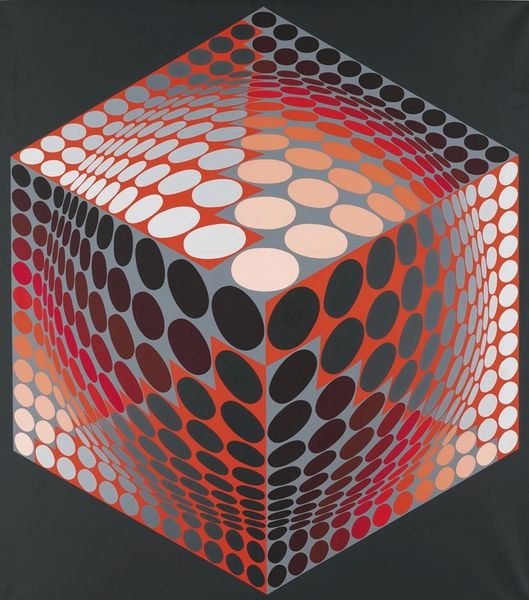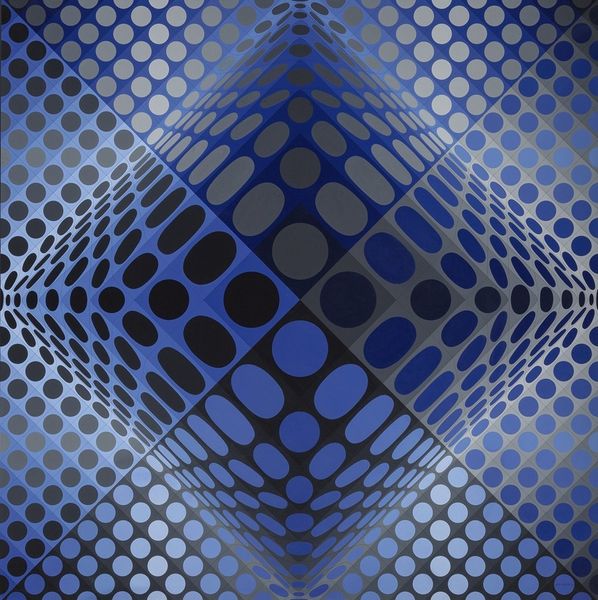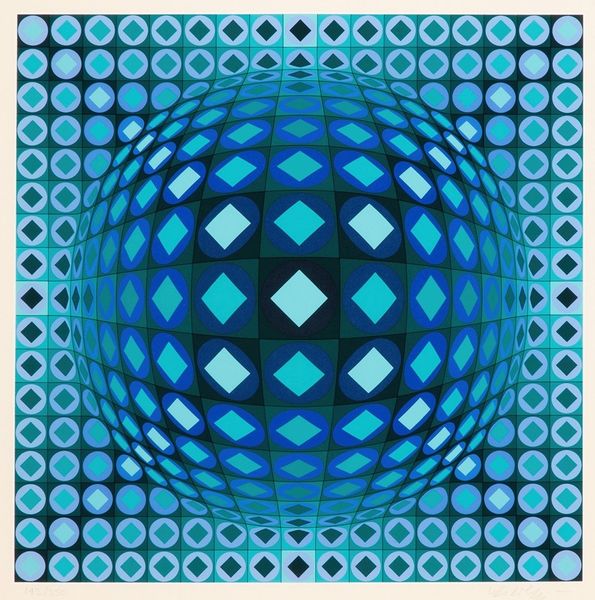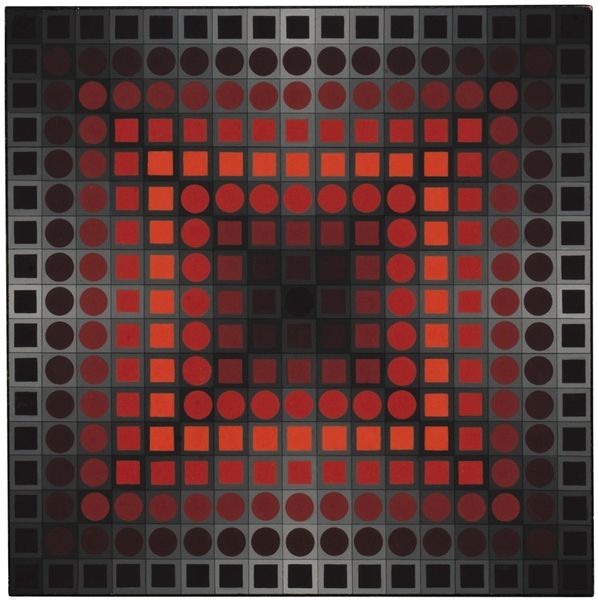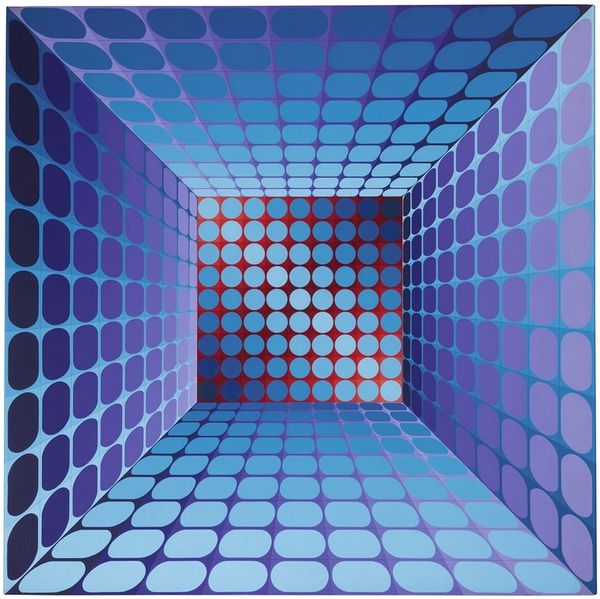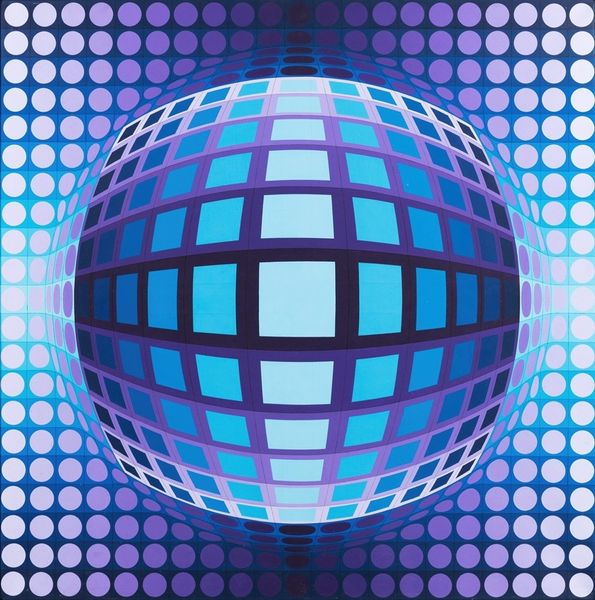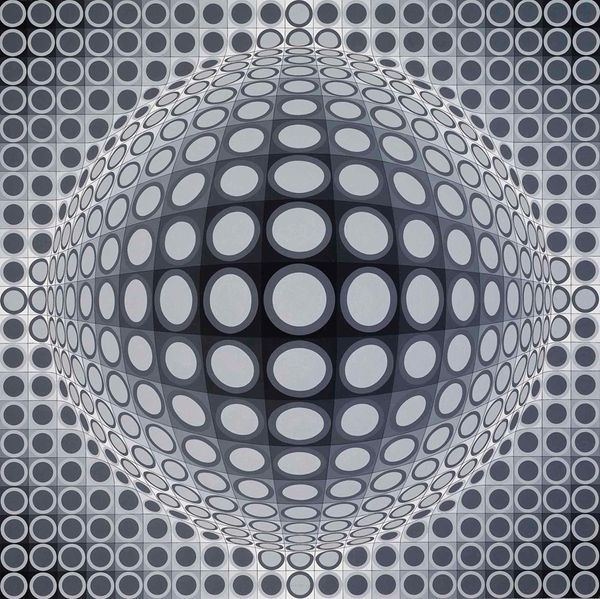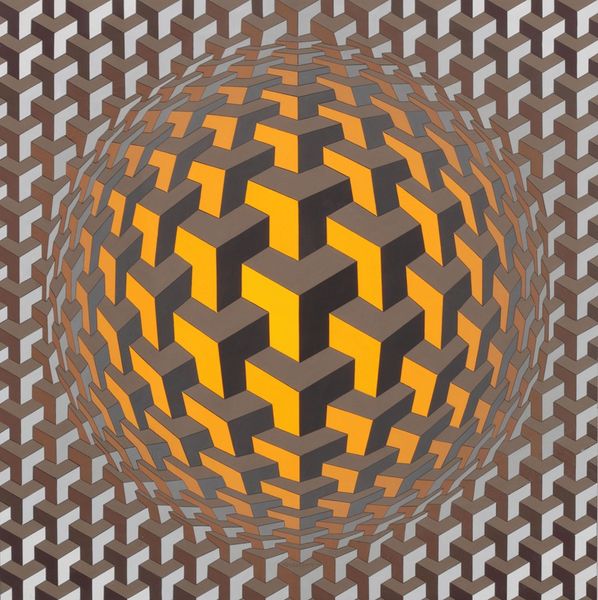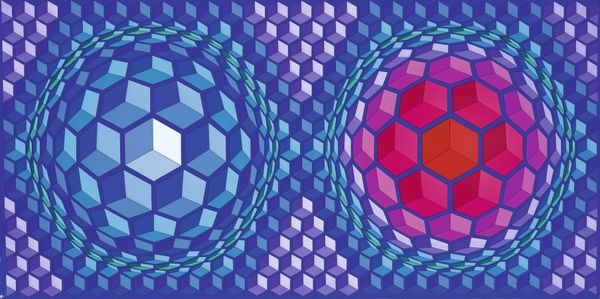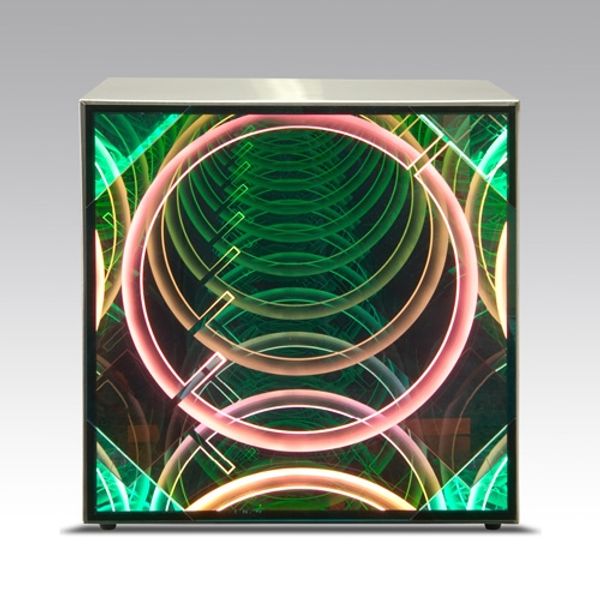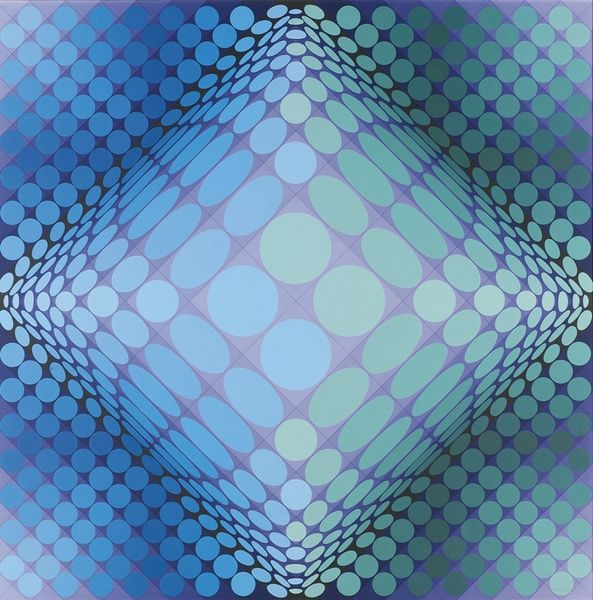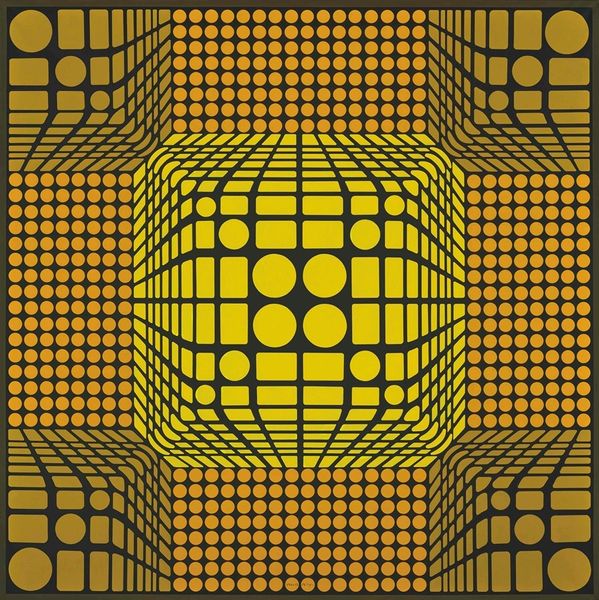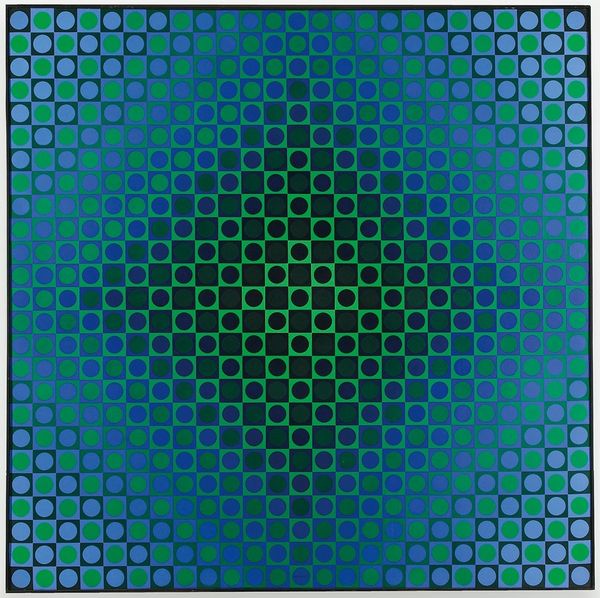
acrylic-paint
#
kinetic-art
#
op-art
#
acrylic-paint
#
form
#
geometric pattern
#
abstract pattern
#
geometric
#
geometric-abstraction
#
abstraction
#
line
#
modernism
#
hard-edge-painting
Copyright: Modern Artists: Artvee
Editor: This is Victor Vasarely’s “Hat-Meh,” created between 1971 and 1972 using acrylic paint. It's… whoa, it's making my eyes play tricks on me. What is happening here? I keep seeing this weird hexagonal tunnel! What do you see in it? Curator: The tunnel effect stems from how our brains interpret these nested hexagonal shapes. Consider the honeycomb: cultures, from ancient Egypt to modern industry, have seen it as a symbol of community, cooperation, even the cosmos itself. The hexagons pull us toward something beyond the surface. Does that make sense to you? Editor: Definitely! Like a portal? I see what you mean by pulling beyond the surface, especially with those gradating shades of blue and green. Curator: Precisely. Vasarely masterfully uses color to manipulate our perception. Those color gradations aren't just aesthetic, they are psychologically charged, referencing ancient notions of depth and unseen realms. This piece taps into that universal symbolic language. What does the tunnel *feel* like? Editor: Kind of infinite? Calm, but also a bit dizzying. I guess I feel the cooperative vibe because the hexagons are working together to produce the tunnel illusion? Curator: Precisely. And consider the "Hat" in the title, perhaps an allusion to Hermes, the messenger between worlds? Vasarely’s "Hat-Meh" isn't just a visual trick, but a gateway to deeper meanings, drawing from centuries of visual culture and our collective understanding of symbols. Editor: Wow, I didn't realize a geometric pattern could be so layered. This makes me see Op Art in a completely new way!
Comments
No comments
Be the first to comment and join the conversation on the ultimate creative platform.
